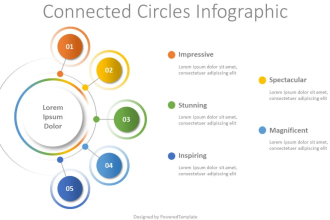Few educators have had as long-lasting an impact as Maria Montessori, an Italian doctor and teacher who established her first classroom in 1907 in Rome. Her teaching philosophy was unique and “was based on her scientific observations of children’s natural learning processes,” which eventually led to the development of the Montessori method of teaching, according to Munir Shivji, a Montessori educator and the director of the American Montessori Society.
She stated that the method became popular in America after Nancy Rambusch, an education pioneer in the 1950s, “found herself dissatisfied with the education system in the United States,” which finally led her to discover Maria Montessori and promote the teaching method.
The learning style became very popular over the years, but it skyrocketed with the advent of social media when countless parents publicly lauded its effectiveness in their children. According to the National Center for Montessori in the Public Sector (NCMPS) in the United States, almost 600 of them are public school programs. More than 15,000 schools throughout the world use it.
According to Angeline Lillard, director of the Montessori science program and a psychology professor at the University of Virginia, “Montessori is the most widespread and common alternative education system in the world.”
What is a Montessori school?
A Montessori School is a learning center where the Montessori method of teaching is practiced. According to Shivji, this type of education focuses on hands-on learning “with specially designed materials to help children learn concepts through direct experience.”
According to Sara Suchman, a Montessori educator and executive director of NCMPS, the Montessori method focuses primarily on a child-centered development approach to education. She explained, “Dr. Montessori observed that, given the right environment and materials, children choose to learn, and adult coercion and external rewards are not needed and can be counterproductive to developing independent learners.”
Montessori learning materials include sensory objects such as puzzle maps and sandpaper letters, as well as construction shapes like rods, cylinders, cubes, and prisms, which are used to master certain skills and procedures. Montessori teachers also use unique methods and tools to teach younger children science and math concepts.
Lillard co-authored a recent meta-analysis of 32 research studies that indicated that Montessori education significantly influenced academic results.
Lillard stated, “Its focus is on the whole child – social, emotional, and cognitive development – rather than aiming to pass tests alone.” “This helps children develop into independent but collaborative, socially aware, competent adults who know themselves and are equipped to lead meaningful, useful lives.”
Is a Montessori school different from a regular school?
Montessori schools are unique for several reasons. According to Shivji, Montessori teachers serve as facilitators or guides rather than traditional teachers, “observing and supporting each child’s individual learning journey.”
Another difference is that children of different age groups, such as 3-6-year-olds, all learn in the same classroom, giving them the opportunity to learn from one another. According to Suspalla, the central method of Montessori is for each student to demonstrate mastery of a subject or ability “by teaching it to one of their peers until their peer understands it as well.”
In Montessori classrooms, children can choose from activities or materials based on their needs at any given time rather than being assigned to the same assignment. According to Lilard, “No one shows them those things – they figure it out,”
According to Shivji, there is also a focus on the real-world application of what is learned. Montessori students are encouraged to participate in and contribute meaningfully to their communities. She explains, “No one shows them those things – they figure it out.” “I can always spot Montessori-trained students even in different classroom settings because they are the ones tidying up a space without being asked or helping another student with a problem they don’t understand.”















